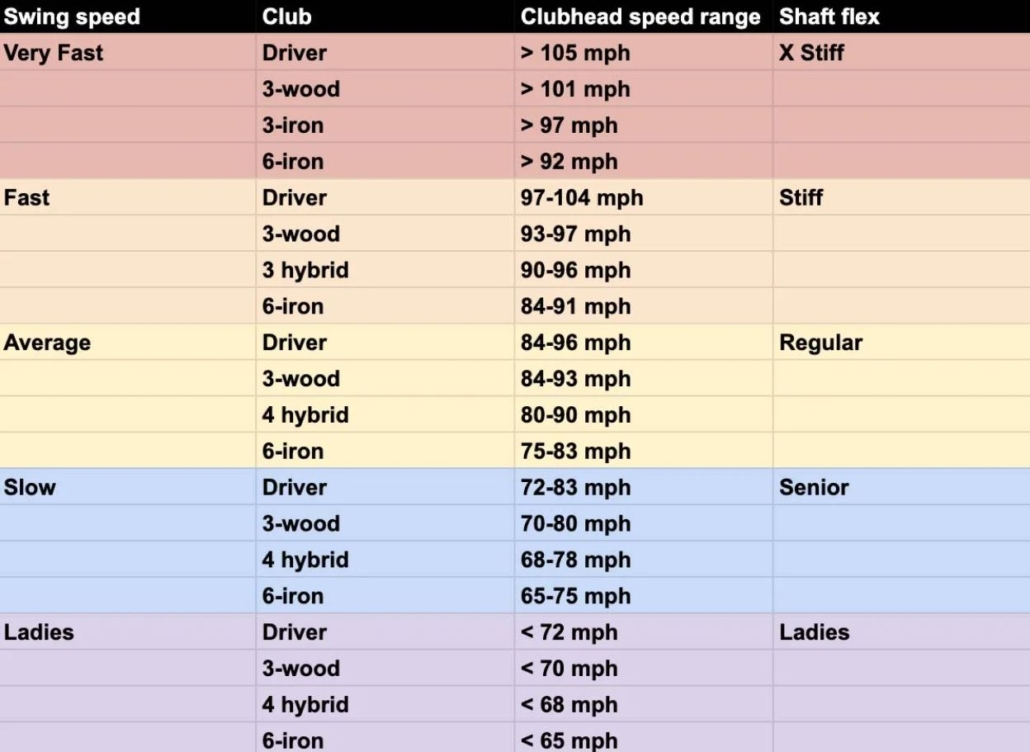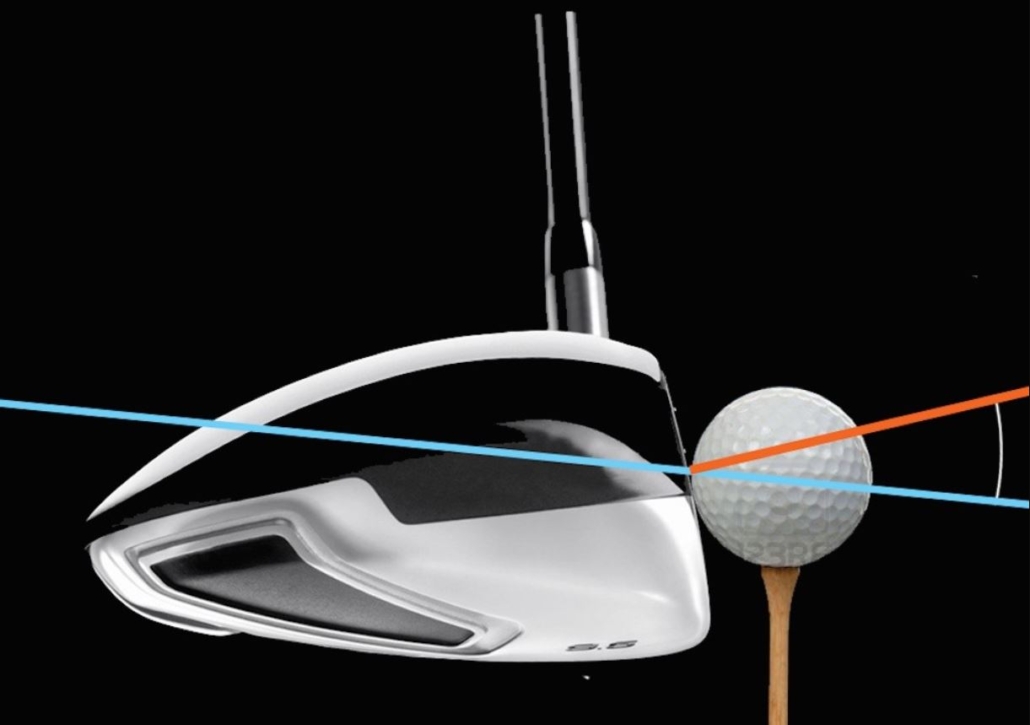Regular Vs Uniflex Vs Stiff Golf Shafts – What To Use For Your Game

There are many aspects to golf that require you to pay attention to detail and enable yourself to maximize your potential.
Selecting the right shaft is going to have a massive impact on your game. There are a couple of issues you need to get right. Whether you want graphite or steel in your irons and what flex should your shafts be. Too stiff or too flexible can have a profound impact on your game and cause multiple issues like slices or hooks. Regular is the most flexible and should be used by average swing speeds, Uniflex are slightly more sturdy and stiff is as the name suggest, less flexible and reserved for faster swing speeds.
A uniflex shaft offers you an option when you are not sure whether you should be playing a regular flex or a stiff flex shaft.
In this piece, we will compare the regular vs uniflex vs stiff golf shafts and how it affects your game.
What Shaft Flex Is And Why It Is Important
Not all golfers swing at the same speed and tempo therefore your equipment needs to suit your swing and strength.
Fast swing speeds require additional support and therefore a stiffer shaft to hold the club head in the correct position despite the increased velocity, while average swing speeds require a regular flex shaft so there angle of attack is optimal for a high and straight ball trajectory.
Using the incorrect flex shaft may cause all types of problems to the ball trajectory. If you are not aware of this, you may be searching for a swing fault that does not exist while the answer is readily available in a small equipment change.
Although most shaft guides have a definitive cut-off point between a regular flex shaft and a stiff flex shaft, in reality, some people fall within a band where the difference is not so clear-cut.
A uniflex shaft fills the gap for golfers that are on the borderline in between a regular and a stiff flex shaft. It allows golfers that are not quite ready for a stiff shaft to have the best of both worlds.
Unfortunately, uniflex shafts are only available in steel and not yet in graphite shafts. The steel shaft will aid in the control of the golf ball trajectory while you are almost certain to lose some swing speed due to the heavier steel shaft.
What is A Regular Flex And Who Is It For?

Regular flex is aimed at the average golfer with a swing speed between 75 mph and 85 mph and as high as 90 mph. This is the most used flex and most new clubs come standard with regular flex shafts.
It can be identified by an “R” nomination on the shaft and is available in steel and graphite shafts.
Most golfers who consistently drive the ball 210 to 240 yards should have a Regular flex shaft fitted irrespective of their handicap.
What’s A Uniflex Shaft And Who Is It For?
To cater for golfers with swing speeds that are at the top end of the regular shaft band and the lower end of the stiff shaft band, manufacturers combined the best attributes of a regular flex and a stiff flex into a uniflex shaft.
Uniflex shafts are suitable for golfers with a swing speed between 85 mph and 95 mph as a crossover between a regular flex and a stiff flex shaft.
Although swing speeds of up to 90 mph can still use a regular flex shaft, you will get more benefit from a uniflex shaft. The same applies to golfers with a swing speed of 95 mph and the use of a stiff flex shaft.
If you hit your drives between 240 yards and 275 yards the uniflex shaft will be best suited to your swing.
What Is A Stiff Shaft And Who Is It For?

Stiff shafts are most used by golfers with fast swing speeds just below the massive swing speed achieved by professional golfers.
The range for stiff shafts is generally between 95 mph to 105 mph and golfers tend to drive the golf ball more than 275 yards regularly.
This applies whether you are a low handicap golfer or just starting with a magnificent talent to swing the golf club at high speed. If you are starting out and not yet achieving the distance but have a fast swing it is advisable to have your swing speed tested by your local professional coach.
What Swing Speed Would Require Each Shaft Flex?

It is generally accepted that flex is tied to your swing speed. Golfers with a swing speed below 60 mph will benefit from using a Ladies flex shaft indicated by an “L”.
Swing speeds between 60 mph and 75 mph will benefit most from a Seniors or Amateur flex shaft indicated by an “A”.
Regular shafts are suitable for swing speeds between 75 mph and 90 mph while stiff flex shafts are aimed at swing speeds between 90 mph and 105 mph.
Swing speeds above 105 mph should use Extra Stiff (X) shafts. This is the most commonly used flex on professional tours.’
Uniflex Vs Regular Shafts
Uniflex shafts are aimed at golfers with a swing speed in the upper end of the regular band (85+ mph).
You can still use a regular shaft at this speed and achieve success. Using a uniflex shaft will ensure that you can squeeze a little more from your game if your swing speed is a little bit faster than average.
Uniflex Vs Stiff Shafts

Stiff shafts are generally used by golfers that have played golf for an extended period and honed their swings to be able to control the driver at such high speeds.
As you grow in confidence and control of your swing speed you may find that you are not getting the maximum benefit from a regular shaft but not quite ready for the stiffness of a stiff shaft. This is where the uniflex shaft gains the most benefits since it is aimed at swing speeds that are closer to the stiff swing speed band.
Unflex Vs Senior Shafts
Senior shafts are designed especially for golfers with a below-average swing speed between 60 mph and 75 mph.
Converting to a uniflex shaft will not benefit these golfers.
Uniflex Vs Graphite Shafts
Graphite shafts are manufactured from a composite material to save weight enabling you to swing faster. A couple of grams of weight-saving can add a few miles per hour to your swing speed and produce more distance.
Using a uniflex shaft does not provide the same weight-saving since it is only available in steel therefore you will have to sacrifice some distance for the benefits of a uniflex shaft.
Is Uniflex Stiffer Than Regular Or More Flexible?
Uniflex shafts are stiffer than a regular flex shaft but it is more flexible to the needs of a golfer that is in the stage before they can comfortably convert to a stiff shaft.
What Happens If Your Shaft Is Too Stiff?

Shafts that are too stiff generally lead to weak fades or slices as you cannot close the clubface in time to produce a straight shot or even a draw.
Another thing you will notice, especially with the driver is that your shots are going too low or even along the ground.
Low drivers with a slice is a very good indication that your shaft is too stiff.
The club head is getting to the ball too early and the dynamic loft is decrease, leading to the low ball flight, slice and loss of distance.
This generally leads to a loss of distance.
What Happens If Your Shaft Is Too Flexible?
When a shaft is too flexible the clubface tends to close, too early leading to a hooked shot or a ball trajectory that is too high and a possible loss in distance and accuracy.
The shot is too high because the angle of attack is too steep or the dynamic loft is too high because the club has bent too much and the club head is too far behind where it should be due to the shaft bending too much.
A shaft that is too flexible can produce inconsistent shot patterns and distances making club selection more difficult.
Do I Need The Same Flex In My Driver As My Irons?
The flex of your shafts depends on your swing speed and strength therefore it is likely that you will require the same flex in your irons that you are using in your driver.
However, this may not hold true if your swing speed is on the borderline between regular and stiff shafts and an evaluation by a club-fitter is advised.
Should My Driver Be Stiffer Than My 3-Wood

Swing speed dictates the flex of the shaft you should be using.
Generally, the shaft will be the same throughout your bag but may differ between clubs if you are on the limits for a specific flex.
You shouldn’t generally consider switching shaft flex unless you are seeing the signs in your game that your shaft is too light or too flexible.
What About Hybrids?
Hybrids are the replacement for long irons, so the shaft flex falls into the same category as for irons.
Look out for the signs that something is off with your flex ie hitting too high or not hitting high enough & consistent hooks or slices.
Should I Get A Fitting?
The fitting process is aimed at providing you with the best opportunity to garner the maximum benefit out of every club in your bag and worth the price you pay, whether you are a seasoned golfer or a beginner.
Loft & Club Type
Woods and hybrids are aimed at providing you with distance rather than distance control and therefore have lower lofts.
Irons and wedges are for maximum control over distance and direction with a higher trajectory enabling you to land and stop the ball on the green.
The shorter the iron the higher the loft and ball trajectory. A high trajectory shortens the distance required to stop the ball on the green.
Shaft Weight
Shaft weight plays a significant role in the maximum swing speed that you can achieve. Furthermore, it impacts the control you can execute over the shot.
Graphite shafts are lighter than steel shafts generally weighing in at below 90g. They are more suitable for golfers that require additional swing speed.
Shafts are generally available in a range of weights from 40g to 135g.
Iron shafts are divided into three weight categories, lightweight for shafts under 90g, mid-weight for shafts between 90g and 110g, and heavyweight for shafts over 120g.
Driver shaft weight can vary from 65g to 130g.
Shaft Material
Shafts are manufactured from steel, graphite, multi-material, titanium, and nanofuse shafts.
Do Stiff Shafts Always Go Further?
Stiff shafts are ideal for golfers with high swing speeds.
Higher swing speeds generally lead to an increase in distance if you are swinging the club fast enough to utilize the stiffer shaft.
Should I Use Stiff Or Extra Stiff Shafts?
Using an extra stiff shaft is only recommended for golfers that have extremely fast swing speed and can control the club at such high speed.
How Do I Increase My Swing Speed?

increasing you swing speed is one way to ensure you need a stiffer shaft.
Stick to your shot shape
To achieve maximum swing speed, you have to use your normal shot shape and not deviate from that. Trying to manufacture a shot will have a significant impact on your swing speed.
Create width in your swing
A width and a large arc will enable you to increase the speed at the point of impact. Get wide early for speed where it counts. Start the backswing with your leading arm straight and keep the maximum width without compromising other swing mechanics.
Start the downswing with your lower body
Fast swingers start the downswing with the lower body a fraction of a second before they reach the top of their backswing.
Clear your hips
Clear your leading hip slightly forward and towards the back to enable you to swing freely with no obstruction.
Keep lag
Keep the lag position until your hands reach hip height before releasing the clubhead for maximum effect.
Use your big muscles
Use the big muscles in your legs and core to generate power through the impact zone. It all starts from the ground up.
Final thoughts

Speed is the key to reaching the maximum distance off the tee once you’ve got your stance, grip and swing under control.
To get the best results from the effect of your swing speed you have to use the shaft suited to your maximum speed and not attempt to use a shaft that is better suited to different swing speeds.
A uniflex shaft is ideal when you are in the transition phase between a regular shaft and a stiff shaft.
Go ahead, work hard on fitness and strength to increase your swing speed, and then get the shaft that will take you to the next level.
Aidan Lehane here, I’m a Mid-low handicap golfer who has made tremendous progress in breaking 90 in just over 1 year of playing golf seriously.
I get out to the course or range as often as possible and review all the equipment I’ve come across on this blog.
